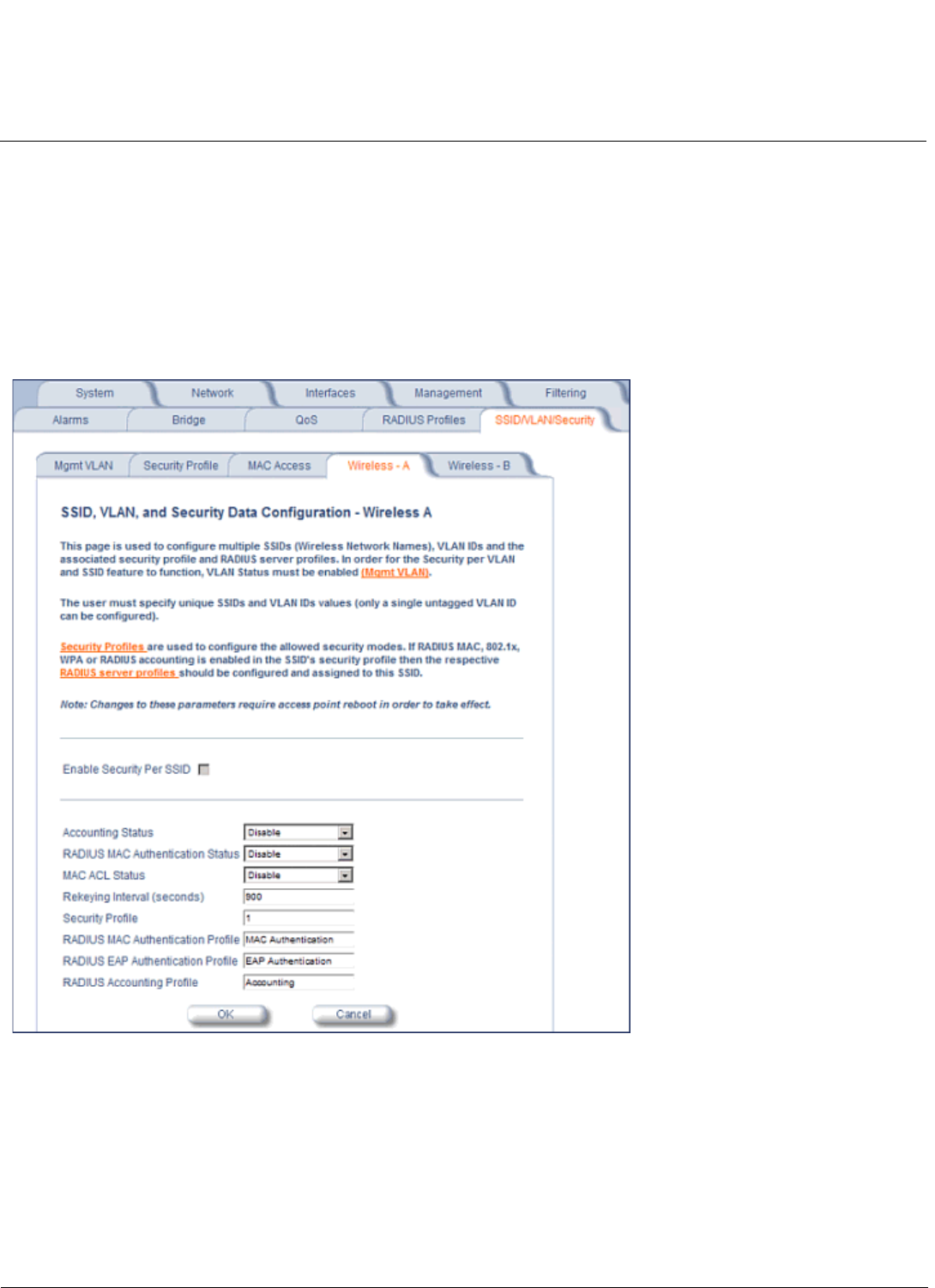Access Point User Guide
Table Of Contents
- Introduction
- Installation and Initialization
- System Status
- Advanced Configuration
- System
- Network
- Interfaces
- Management
- Filtering
- Alarms
- Bridge
- QoS
- Radius Profiles
- SSID/VLAN/Security
- Monitoring
- Commands
- Troubleshooting
- Command Line Interface (CLI)
- General Notes
- Command Line Interface (CLI) Variations
- CLI Command Types
- Using Tables and Strings
- Configuring the AP using CLI commands
- Set Basic Configuration Parameters using CLI Commands
- Set System Name, Location and Contact Information
- Set Static IP Address for the AP
- Change Passwords
- Set Network Names for the Wireless Interface
- Enable 802.11d Support and Set the Country Code
- Enable and Configure TX Power Control for the Wireless Interface(s)
- Configure SSIDs (Network Names), VLANs, and Profiles
- Download an AP Configuration File from your TFTP Server
- Backup your AP Configuration File
- Set up Auto Configuration
- Other Network Settings
- Configure the AP as a DHCP Server
- Configure the DNS Client
- Configure DHCP Relay
- Configure DHCP Relay Servers
- Maintain Client Connections using Link Integrity
- Change your Wireless Interface Settings
- Set Ethernet Speed and Transmission Mode
- Set Interface Management Services
- Configure Syslog
- Configure Intra BSS
- Configure Wireless Distribution System
- Configure MAC Access Control
- Set RADIUS Parameters
- Set Rogue Scan Parameters
- Set Hardware Configuration Reset Parameters
- Set VLAN/SSID Parameters
- Set Security Profile Parameters
- CLI Monitoring Parameters
- Parameter Tables
- CLI Batch File
- ASCII Character Chart
- Specifications
- Technical Support
- Statement of Warranty
- Regulatory Compliance

Advanced Configuration AP-4000 Series User Guide
SSID/VLAN/Security
124
the same system separated per VLAN. See the Security Profile section for more information. Each SSID can support a
unique VLANs. In order for the AP to support multiple SSID/VLANs, VLAN Tagging must be enabled. These parameters
are configurable on the Wireless-A and Wireless-B sub-tabs.
Configuring an SSID/VLAN with VLAN Tagging Disabled
With VLAN tagging disabled (from the SSID/VLAN/Security > Mgmt VLAN tab), only one SSID can be configured per
interface. All parameters set on the Wireless-A or Wireless-B tab will be applied to that SSID.
1. Click SSID/VLAN/Security > Wireless-A or Wireless-B.
The SSID, VLAN, and Security Configuration page is displayed.
Figure 4-44 SSID, VLAN, and Security Configuration (VLAN Tagging Disabled)
2. Enable or disable RADIUS accounting on the VLAN/SSID by selecting Enable or Disable from the Accounting
Status drop-down menu.
3. Enable or disable RADIUS MAC authentication status on the VLAN/SSID by selecting Enable or Disable from the
RADIUS Authentication Status drop-down menu.
4. Enable or disable MAC Access Control List status on the VLAN/SSID by selecting Enable or Disable from the MAC
ACL Status drop-down menu.
5. Enter Rekeying Interval in seconds (between 60 and 65525). The default interval is 900 seconds.










